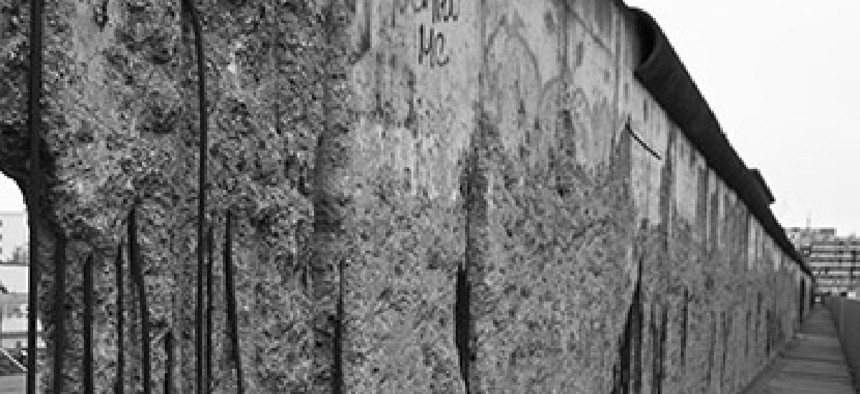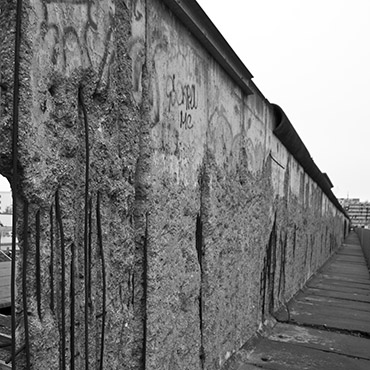Remembering time behind the Berlin Wall

Before he became a procurement expert and management professor, Steve Kelman dabbled in Cold War intrigue. Twenty-five years after the fall of the wall, he recalls the experience.

Most readers probably think of me as the wonky Harvard professor and procurement/public management guy. But I have a more exciting past as someone who spent six weeks as one of the few Americans traveling in East Germany in the early 1970s. So the twenty-fifth anniversary of the disappearance of the Berlin Wall -- in my view, Nov. 9, 1989, is truly one of the greatest days for freedom and human dignity in modern times -- aroused special emotions for me.
In 1971, just out of college, I got an assignment from The New Yorker magazine to write an article for them on everyday life in East Germany. (I had earlier written an article for them on the 1970 Swedish election campaign.) In those days, it was almost impossible for an American to get permission to visit East Germany for more than a few days. I requested, through some address in East Berlin (the U.S. did not have diplomatic relations with East Germany then), a journalist visa that would allow me to stay a longer time. I did not want to mention The New Yorker, however, so I produced a letter from The Yale Daily News to support a request as a student journalist (I had quarreled as a Harvard undergrad with the far-left Harvard Crimson, so I couldn't get their help.) Two American students had been arrested in East Germany just a month before, so I wasn't entirely certain this approach would be successful or safe either.
When I arrived at the East Berlin border, still having received no response to my visa request, I was met by a man named Herr Bach who claimed to work for the East German Academy of Sciences and to be interested in meeting Americans traveling to East Germany. He would get me a visa for a week, we could have discussions, and maybe my visa could be extended.
It turned out he was interested (remember, this was 1971) in U.S. anti-Vietnam protest movements and stuff like that. Why couldn't they get information about these from the U.S. Communist Party, I asked? Well, they were afraid the American Communist Party people they met didn't always tell them the true story, but rather exaggerated their role in protest movements.
I ended up getting a visa extension (this was only something like the 196th visa that had been granted an American for anything more than a one-day border crossing to East Berlin), which allowed me to stay about six weeks in East Germany – staying, in fact, until almost the exact tenth anniversary of the building of the wall. I was attached to a sinister figure named Dr. Waack, who was about the only person I met in East Germany who actually supported the government -- he shaved with Gillette razors, then completely unavailable to East Germans, and once, when we visited some music club, told me that if he had his way, places like that would all be "blown up."
I had an amazing opportunity to engage Dr. Waack, the committed communist, about his weird views on society. I also played a cat-and-mouse game with Dr. Waack, finding time to see again people I had met during an earlier visit in 1969 and to meet other young people, uniformly hostile to the government and longing to leave for West Germany. I got to see rotting canned food (with slime oozing out) sold in supermarkets, restaurants with 30 items on the menu but just two actually available, and the enormous expanse of Marx-Engels Square in the middle of East Berlin, virtually empty except when there were huge government rallies. The whole time I was scared that my ruse would either soon be discovered or already had been.
I described all this in a book I published in 1973, called “Behind the Berlin Wall.” It tells you how my story ended. I won't go into all the details here (read the book!), but I can reveal that before I left, an effort was made to recruit me as an East German spy -- so at least my ruse worked!
(Several years ago, somebody I didn't know set up a Facebook page for the book. And when I posted about this on Facebook on Sunday, a commenter told me that the book is available from used book sellers on Amazon and Barnes & Noble.)


